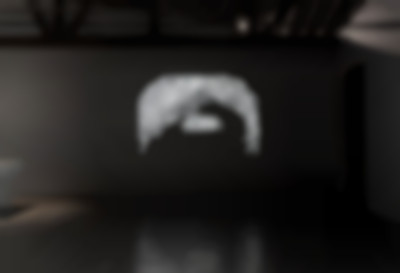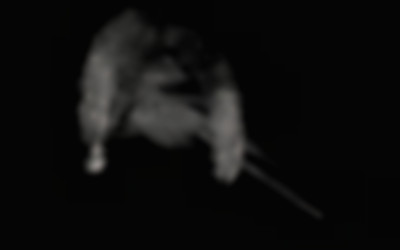Excerpt, On a Possible Passing From the Inscription to the Body. Video, B/W, sound, 12 min.
On a Possible Passing From the Inscription to the Body
(2020)
The digitized and 3D-rendered object is a bundle of human hair from Korea. Labelled as “Unknown” by the National Museum of Ethnology in Leiden, it is uncertain whose hair it is and how and why it became part of the collection. The hair is intimately combed and presented to us in a transformed digital state, seeking to activate new inscriptions to its body and engage our reciprocal involvement in its fate.
While I comb my hair, it begins to grow. The gesture of touching it, rubbing it, starts to make traces in the air. On a Possible Passing from the Inscription to the Body is a performative passage that embodies this liminal state of the object in which it is resurrected and mediates with us. The transition from one medium to another opens a passage. This dialectical passage shifts the human material from one time to another and from one dimension to another. It circumnavigates the transhistorical temporality of the object by activating new inscriptions to its and our bodies through reciprocal heuristic involvement. It utilises new media in a way that opens up an entirely different affective relationship to the object, and it poses the possibility of a restorative function for new media visualisations of heritage objects: the objects from the perspectives of human subject/object relationships, challenges to post-Enlightenment conceptions of worlding, and the fate of cultural heritage objects in a world of digital archiving and artificial intelligence.
“Aram Lee takes a neglected object and, using 3D rendering, cares for it at a level that has never happened at the museum. In doing so, she asks us to notice that a devalued human life is present in this devalued object. As Lee’s work suggests, institutional care for cultural objects relates to care for people and for the cultural memories that contribute to their sense of identity and worth in the present. Whether they are considered artworks or not, the responsibility of owning cultural objects lies in recognizing this interrelationship. For this reason, I would differentiate between an individual artistic claim of ownership over matter and an institutional claim. Nevertheless, artists’ self-perceptions of their role and the role of their work can contribute to maintaining or challenging institutional definitions of art, and the social and cultural hierarchies embedded within those definitions.”¹
Footnotes:
- Excerpt from Objecthood: A Conversation with Lucy Cotter by Jess Nickel, published by Art & About, 2020.
On a Possible Passing from the Inscription to the Body has been commissioned by Suns and Stars, and has been supported by Europees Jaar van het Cultureel Erfgoed (2018), 2020.

